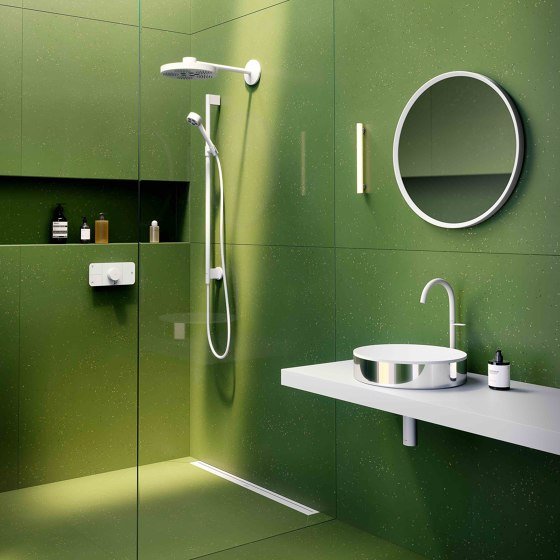What Is Aesthetics?

Humans try very hard to make the inexplicable understood. Our spirituality becomes religion. Fairness becomes law. And what delights us becomes aesthetics, and aesthetics are dumbed down to “style” in fine arts and architecture. The description, then definition, of aesthetics enables us to judge, and hopefully, control what thrills us: “Styles may change, details may come and go, but the broad demands of aesthetic judgement are permanent”. — Roger Scruton
But the instant delight we sometimes feel when we hear, taste, think or see parts of our experience is unreasoned in its apprehension. We try to create value in our outcomes by defining them beyond experience – that is aesthetics.
Art is the imposing of a pattern on experience, and our aesthetic enjoyment is recognition of the pattern.– Alfred North Whitehead

Humans want to know the “why” of every unknown, whether it is Quantum Mechanics or The New Testament. In the things we create humans aspire to capture the delight in beauty that is simply there. Rather than accept the outcomes we feel every day, humanity tries to invent the joy that is given to us, and channel its motivations and meanings. Often to great success.
In the world there exists no aesthetic plane, not even the aesthetic plane of goodness. — Clarice Lispector

Aesthetics are a moving target, with the rationales and values of our determinations as variable as any other intellectual construction. “The Big Bang” or “Original Sin” are as valid as “Modernism” or “Classicism” in describing the meaning of what we cannot ultimately define. Our buildings are merely the largest manifestation of the hopes and faith every one of us have that are part of us.
Nothing’s perfect, the world’s not perfect. But it’s there for us, trying the best it can; that’s what makes it so damn beautiful. — Hiromu Arakawa
When architects use aesthetics to define their outcomes it is a conundrum: either we end up or start with the judgments we apply to ourselves. When we seek objective aesthetics based on the idiosyncrasy of perception, the joy of beauty is lost in the value of having control.

In the end, what we build is just who we are. After the fact rationalization of the joy found all around us begs the simple truth that we did not make this world, let alone ourselves. If we could, we would control what gives us joy – and thus eliminate what we are afraid of. Ultimately, we do not have that control. If we did, every building would be a sunset or a baby’s smile, and death would have no sting. But aesthetics, religion or law do not determine what is beautiful in our
lives.
Art becomes so specialized as to be comprehensible only to artists, and they complain bitterly of public indifference to their work. The public, left far behind, looks on bewildered, loses interest and turns away. — Wassily Kandinsky
.jpg?1652855500)
This article is part of the ArchDaily Topics: Aesthetics, proudly presented by Vitrocsa the original minimalist windows since 1992. The aim of Vitrocsa is to merge the interior and exterior with creativity.
Vitrocsa designed the original minimalist window systems, a unique range of solutions, dedicated to the frameless window boasting the narrowest sightline barriers in the world: “Manufactured in line with the renowned Swiss Made tradition for 30 years, our systems are the product of unrivaled expertise and a constant quest for innovation, enabling us to meet the most ambitious architectural visions.”
Every month we explore a topic in-depth through articles, interviews, news, and projects. Learn more about our ArchDaily topics. As always, at ArchDaily we welcome the contributions of our readers; if you want to submit an article or project, contact us.



.jpg?1652855500)



